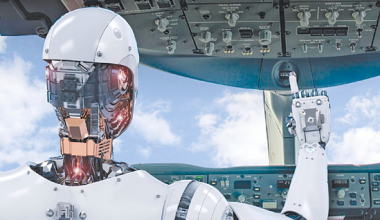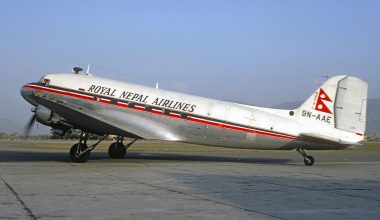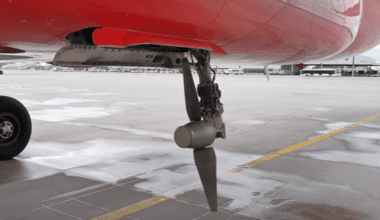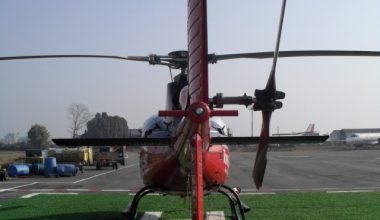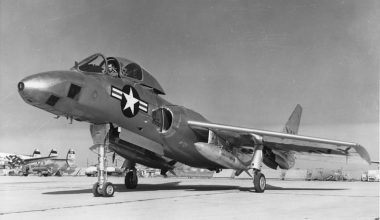Aviation fuel is the crucial requirement for every flight, making it one of the essential parts of the aviation and aviation industries. Reliable aviation fuelling is essential for planning flights route.
Aviation fuels are petroleum-based fuels or combinations of petroleum and synthetic fuel used to power aircraft. They have more substantial specifications than those used for land use, such as heating and road transport, and contain additives that improve or preserve properties necessary for fuel performance or handling. The majority of aviation fuels available for aircraft are petroleum spirits used in engines with spark plugs or jet turbine engines used in aircraft engines.

Type of aviation fuel
So basically, there are four types of aviation fuels;
Jet Fuel(Jet A)
Jet fuel, also known as JP-1A, is used globally in turbine engines such as jet engines, turboprops, etc., in civil aviation. This is light, carefully distilled petroleum. The type of fuel is kerosene. This fuel has a high boiling point above 38°C and a freezing point above-47°C. It is a similar type of kerosene fuel that is usually only available in the United States.
Read More
The majority of airports in Nepal lack a fuel depot facility
After refining, jet fuel is mixed with a minimal number of additives. These additives, among other things, prevent fuel from igniting in an uncontrolled manner, stop deposits from forming in the turbine or stop aircraft fuel from becoming electrically charged. Additives are also available to prevent the growth of organisms in aviation fuel. Certain other additives ensure that jet fuel does not freeze: the air temperature at cruising altitude is often below-30°C (-22°F), and the freezing of aviation fuel would have life-threatening consequences. NATO military aircraft use the same fuel with even more special additives like Jet Propellant 8 (JP-8).

Jet Fuel is a high-quality fuel; if the purity and other quality tests for jet aircraft are not carried out, it is sold to ground-based users with less demanding requirements, such as railroads.
Kerosene Gasoline mixture(Jet B)
Kerosene Gasoline mixture aviation fuel is used for military aircraft. This particular mixture is also called JP-4. Around 65 percent gasoline and 35 percent kerosene is used in regions with incredibly low temperatures because it is more flammable at a flashpoint of 20°C, and its freezing point can be as low as-72°C (compared to-47°C for Jet-A). The engines must, however, be appropriate for the use of these aviation fuels.
Aviation Gasoline (AVGAS)
Aviation gasoline is also called avgas, which is typically used only in older piston engines of sports aircraft and small private aircraft requiring high octane leaded fuel. Globally, only 100 LL avgas is still available, a standard low-lead (LL) gasoline that is subject to the U.S. Only gasoline-powered aircraft can be operated with avgas; turbine-powered or diesel-powered aircraft need kerosene as fuel.

While avgas comes in several different grades, its 100 octane rating is higher than that for “normal” gasoline, ranging between 91 in the United States and 95 in Europe.
Biofuel
As a fossil fuel, jet fuel is more expensive over the long term. Research on sustainable alternatives, e.g., biofuel based on algae or biofuel from jatropha and camelina oil or “Solar Jet,” has also been ongoing for some time now.

Some consider aviation biofuel to be the primary means by which the aviation industry can reduce its carbon footprint. After a multi-year technical review by aircraft manufacturers, engine manufacturers, and oil firms, biofuels were approved for commercial use in July 2011. On June 30, 2011, KLM B737-800 took the world’s first commercial biofuel flight, carrying 171 passengers from Amsterdam to Paris. The industry’s attention is now on second generation sustainable biofuels (sustainable aviation fuels) that do not clash with food supplies or are significant consumers of prime agricultural land or freshwater.
Aviation Fuel Price
Aviation prices differ according to the type of fuel, and they are never constant. The average Aviation fuel price of 100LL AVGAS is $ 4.60 per gallon in the US, with the lowest $ 2.20 going up to a maximum of $ 11.40, according to Airnav. It costs $ 1.17 per gallon for Jet Fuel JP-1A, which is cheaper compared to avgas. Jet Fuel costs $3.7 per gallon or $1 per liter in Kathmandu, Nepal. However, it costs $2 per gallon or $0.55 per liter compared to Delhi, India. Due to the high aviation fuel price, Nepal’s tourism industry is being affected, which was started by the Nepal Government.

